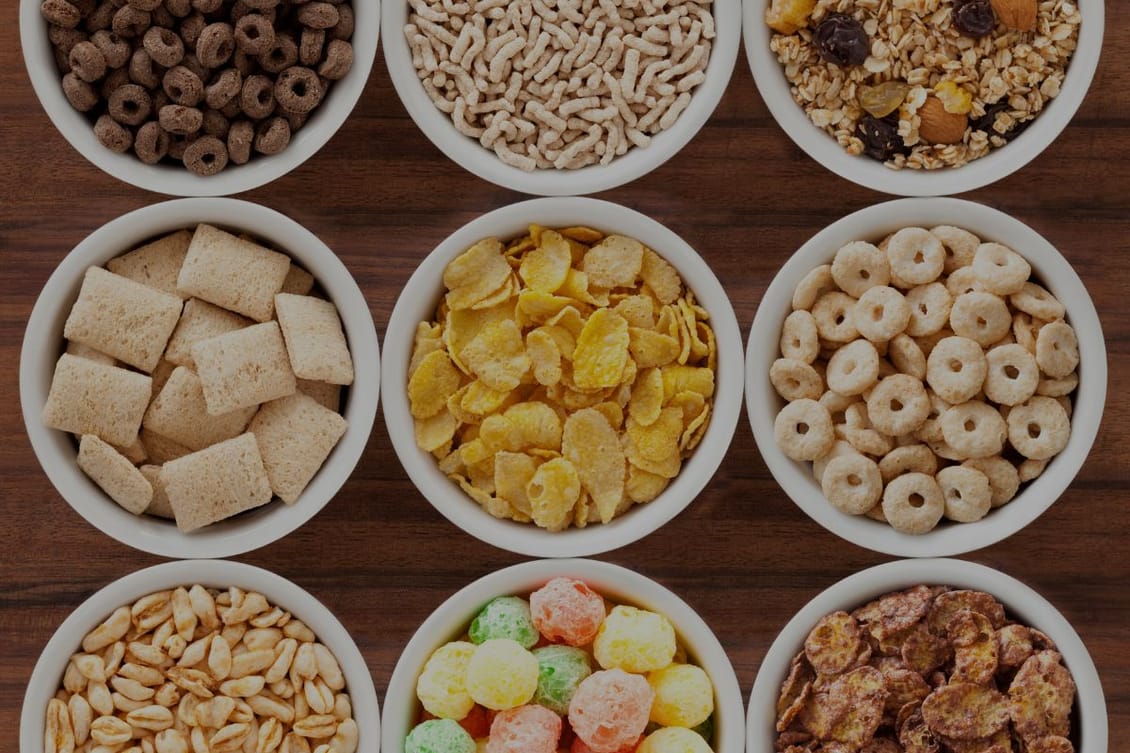
A big welcome to the 22 new foodies who have joined us this week — you’ve got good taste.
If you too have good taste then subscribe to The Sauce — InFlavour's content & insights community, run by global experts. Sink your teeth into stories about food, worth sharing, and receive insights, ideas, opinions, trends, and strategies straight to your inbox.
Keep up with our weekly newsletters on LinkedIn by subscribing here.
Inspired by the recent news that Kellogg is bringing cookies to breakfast cereal, we did a little digging into the history of convenient breakfasts-from-a-box.
We wanted to find out how breakfast cereals – or more specifically, the marketing campaigns behind them – have changed the way people structure their days around food.
And we’re going to use a tiger named Tony to tell this story.
For those of you who didn’t grow up with Tony the Tiger ingrained in your cultural awareness, let us introduce you:
He’s a cartoon tiger, and he started his career as the trademarked character of Kellogg in 1952. Tony was featured on every box of Kellogg’s Frosted Flakes (flakes of corn, frosted with sugar) – and it wasn’t long before he started showing up off-the-box too.
Tony (and the whole concept around him) was created by artist Eugene Kolkey. And while he wasn’t the first cartoon cereal, it quickly became clear that there was something special about Tony. He had a real knack for persuading kids (and their parents) to add Frosted Flakes to their morning routine.
YouTube is awash with vintage Tony the Tiger commercials from the 1970s, 80s and 90s; such as this one; and even this (audio-corrected) ad that dates back to the 1950s.

Initially, Tony’s struggles were rooted in trademark controversy.
Firstly, in 1964, oil company Esso (now ExxonMobil) started using a tiger quite similar to Tony as the mascot for their gasoline products. Esso federally registered its tiger under the trademark category for petroleum products – even giving it a slogan (‘Put a tiger in your tank’) that was remarkably similar to Tony’s (‘They’re gr-r-eat!’).
All was well. Kellogg and Esso’s tigers existed in peaceful harmony, operating in different industries and accepting one another’s existence – and the two companies spent a combined USD 1.5 billion dollars in advertising in their respective industries from 1952 to 1995.
Then in 1992, ExxonMobil (formerly Esso) launched a new business sector and product line using its existing tiger. Exxon failed to extend its federal trademark to encompass this new sector – and Kellogg filed a lawsuit. Exxon’s tiger was being used to promote food and beverage products, and Kellogg wasn’t going to let this go.
The case took years to resolve, with millions of dollars spent – but it was settled eventually, with Kellogg’s claims upheld by the court.
In 1986, Kellogg faced another trademark situation. South Korea was preparing for the 1988 Summer Olympics – and organisers decided on a mascot named Hodori, also a tiger who appeared to be very similar to Tony.
The cereal company wasn’t happy about this. Tony was such a prolific advertising presence for Kellogg that they were certain the similar tiger would cause confusion among cereal consumers and sports fans. Media reports hyped up the ‘Hold That Tiger’ battle between Kellogg and the Olympic organisers, and it captured global attention.
Tony wasn’t afraid of a fight. And with good reason: he existed at the forefront of F&B marketing, and over time, he would have to become accustomed to criticism and conflict.
Tony was created to target children through advertising. And a fun, engaging character who promoted a sugary cereal wasn’t going to escape examination for long.
Studies began to connect the dots between media characters and children’s food preferences. And Tony (along with similar mascots) have been banned from being featured in advertising and on packaging in some countries – including Argentina, Mexico, Chile, and Peru.
A UK study conducted by Action on Sugar and Children’s Food Campaign found that out of 526 ‘child-friendly’ F&B products that feature cartoon characters in their marketing campaigns, 51% were high in sugar, saturated fat, salt, and fat – while only 18 healthy products (fruit, vegetables, and water) used cartoons as promotional tools.
These findings have driven pushback against child-friendly characters being used to promote food products deemed as unhealthy.
His place in the world has shifted over time. But that scrappy, tenacious tiger (and the marketers behind him) has changed morning meals in regions around the world – he’s part of the reason why millions of people continue to eat cereal for breakfast on a daily basis.
Today, we see Tony less as the symbol of a specific cereal, and more as a symbol of the power of F&B marketing. When a concept hits in all the right ways at the right time, it has the potential to change the way people integrate food products into their daily lives.
Food marketing isn’t just about selling products. It can reshape eating habits and change food preferences. That’s a major responsibility for F&B brand marketers – and a real opportunity, too.
Mark your calendars for our next newsletter on 30 August 2024. Is there anything specific you'd like to see covered? We'd love to hear from you! Click here to share your suggestions.
Until next week,
Aravind Kanniah,
Exhibition Director
If you want to stay ahead of the latest developments in F&B, register now to attend InFlavour 2024. We can’t wait to see you there.
Take your seat at the InFlavour table, a government-backed and world-leading B2B food event by Tahaluf.
E-mail address SubmitWant to keep up to date with all our latest news and information? Enter your name below to be added to our mailing list.
E-mail address Submit